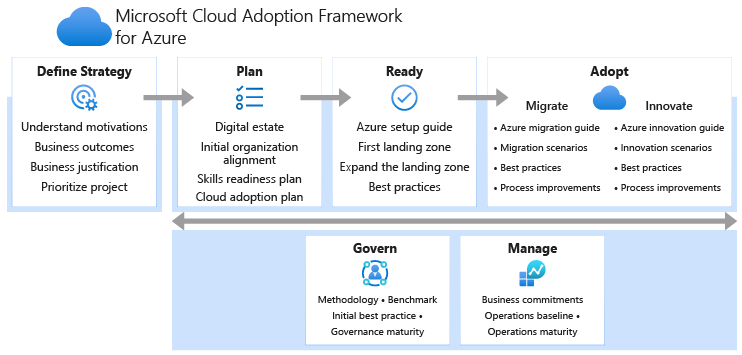In this post, I want to discuss why many businesses fail to get what they expect from The Cloud – why their “digital transformation” (or “cloud transformation”) fails.
Cloud Concerns
We’ve all seen the surveys. CIOs are scared about lots of things when it comes to cloud migration/adoption. Costs might overrun. Security might be insufficient. Skills are in short supply. I’m afraid to say those are all concerns – manageable ones. The big question is rarely discussed until it is too late: what are we really getting into?
Failure Starts In The Middle
Many cloud adoption projects start at the wrong place in the organisation. Instead of an instruction coming with direction and authority from the C-suite (CEO, CTO, CSO, CIO, etc), IT management, typically in Operations, make the decision to go to The Cloud for mundane reasons such as “try to reduce costs” or “avoid doing another hardware upgrade”.
Operations go ahead and build (or request a consultant to deliver) what they know: a centrally managed, locked-down environment. You know what I mean; a rigid environment that complies with old ITIL-style processes from the early 2000s. If a developer needs something, log a ticket, and we’ll get around to it.
Meanwhile, developers hear that The Cloud is coming and they imagine a world where there is self-service and bottomless pits of compute and storage. Oh! And less waiting on tickets logged with Operations. And the C-suite gets a visit from AWS or Microsoft and is told about how agile and disruptive their businesses will become. Super!
The Age-Old Battle Continues
The Cloud landing zone is built and developers are given “access” (if we can call it that) to their new virtual workspace, only to find that they can create limited quantities and sizes of (breath) virtual machines. Modern platforms are nowhere to be found. The ability to create is locked away behind custom permissions roles. If they want something, to do their job for the business, they need to log a ticket and wait – just how is this any different from the old VMware platform they probably ran on before The Cloud?
And the business is digitally transformed. Well, no, not really. Some SAP stuff might be running on Azure hardware and VMs now. And some databases might have been moved to The Cloud. But that’s about it. None of the agility or disruption happens.
What Went Wrong?
The issue began right at the start. I’ll give you an example. A Microsoft account manager (or whatever they are called this financial year), a Microsoft partner, and an IT operations manager have a meeting. This sounds like a bad joke so far, and I promise that no one will laugh. The Microsoft account manager offers X dollars to perform an assessment. Someone will come in, scan the VMware machines, write a report that says “here is the TCO comparison” and “you’d be silly not to get started now”. So the Operations manager gives the go-ahead and the direction of what to do.
That contrasts greatly with the Microsoft Cloud Adoption Framework (CAF). Phase 1 (Strategy) of the CAF is all about getting business motivations from the C-suite that can be shaped into the direction in phase 2 (Plan) where the tech stuff begins – including the (digital estate) assessment. And the Plan phase is all about people and process. Ahh – people (skills) and process (change). This is where digital transformation begins. We haven’t even gotten to the part where things are deployed (phase 3, Ready) in The Cloud yet because we don’t know what “shape” the organisation will be until business motivations tell the IT departments what is expected from The Cloud.

So What Is Digital Transformation?
In short, digital transformation should change:
- Process: Legacy methods of creating & running IT systems may not suite the business, especially if self-service, agility, and disruption and required. Look at the organisations that have shaken up different verticals in different industries and service sectors. Their IT departments are very different to the vertical pillars that you may recognise in your organisation. The order to change came from the top where the authority resides.
- People: How people are organised may need to change. The skills they possess must change. Roles must be identified and skills must be developed before the project, not during or even after some handover phase from a consulting company. A budget and time for training, possibly even a budget to recruit additional bodies requires authority that can only come from the top.
- Technology: It’s easier to change technology than to change process and people. The problem is what to change it to. The shape of the technology must reflect the people and process patterns, otherwise it is not fit for purpose.
